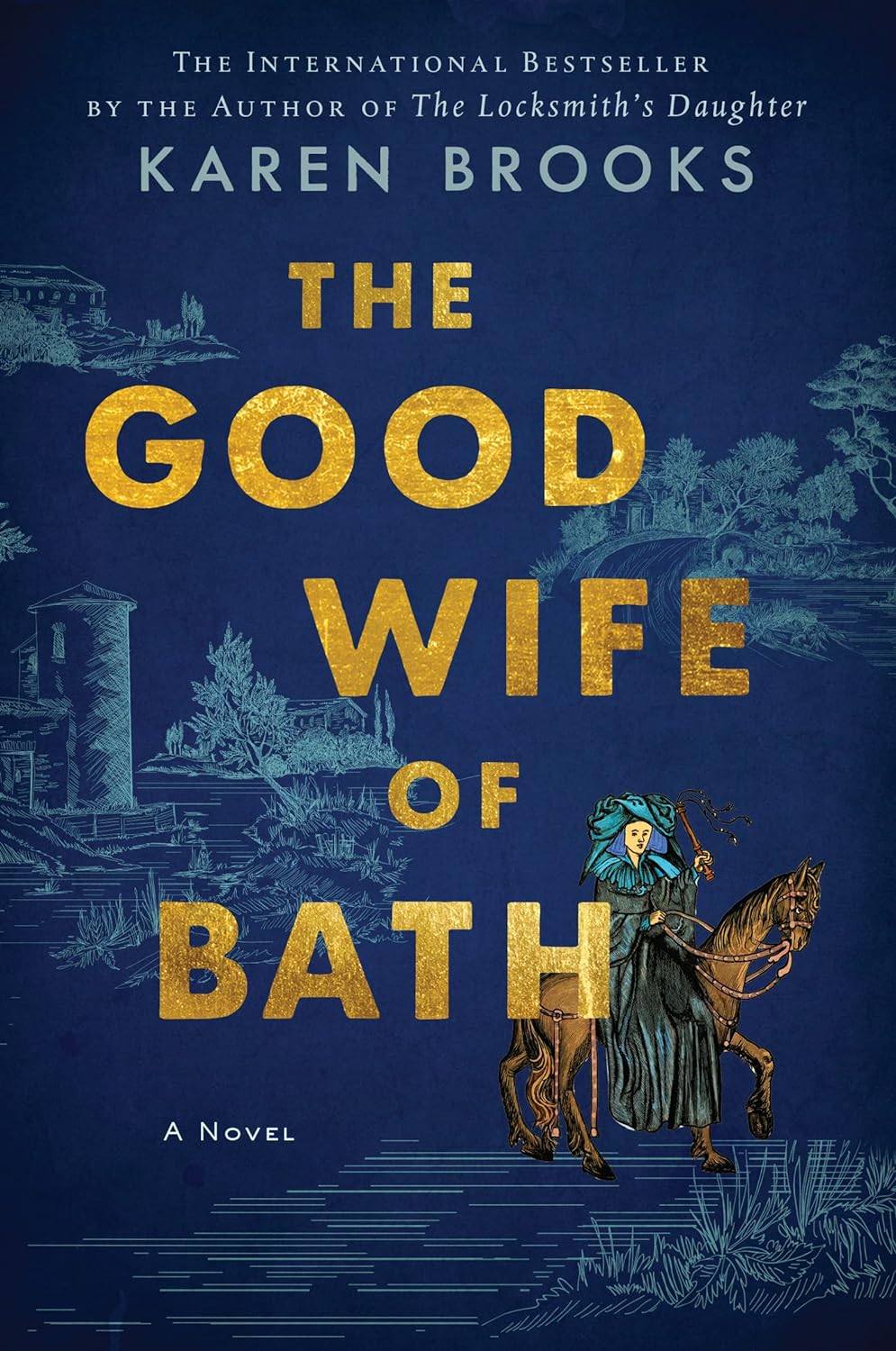The good wife of Bath by Karen Brooks

With only the most basic of information about the Wife of Bath in Chaucer’ Canterbury Tales, this story has been teased out to produce not only a great read, but one that remains true to the original character, on her way to Canterbury with other pilgrims in the late fourteenth century. The story reveals the background of the time, when men could beat their wives, where villeins still were part of the farm’s stock, little more than slaves, where the church held sway despite the countless examples of hypocrisy, and when people went on pilgrimages to places held holy because of dubious relics held there, or because they are places of importance in the Christian world.
Eleanor’s early life is a mix of being treated like part of the family which adopted her, but also seen as a servant, until she is caught at 12, about to be deflowered by a priest. She, of course must shoulder the blame, after all she is a woman, and so is given in marriage to a man fifty years her senior. It is this marriage she looks back on with warmth, as he treats her with respect and builds up her skills at the loom. After his death, his son takes over the property and Eleanor is kicked out. This is the way her life continues, a husband, five of them whose death sees her lose everything, forcing her to rebuild her life. Going on a pilgrimage at the end of each marriage gives her time to pause and reflect. But she still makes far reaching errors of judgement, that give her friends caused for alarm.
This is a wonderful retelling, rich in detail, funny, sometimes brutal and bawdy, allowing us a glimpse of the times, particularly focussing on the plight of women, through Eleanor’s inquiring eyes. Geoffrey Chaucer is related rather losely to Eleanor and so has an enduring relationship with her in the form of letter writing and occasional visits. It is he who promotes Eleanor’s first marriage, knowing the old man would treat her well and teach her useful skills.
She goes on creating workshops where women are employed, testing the ideas and teachings of the church and the various forms of government she crosses. It is in London that she meets up with an arm of the Guild, so appalled that she as a woman has set up a business, her house and livelihood are smashed up and her dogs and one of her entourage, slaughtered.
Each time she goes up against aggrieved men who will not allow her to do what she wants, she goes on a pilgrimage. So we are taken to Rome, Canterbury, Jerusalem, and St Martin’s Le Grand, all sparkling in the descriptions given by Brooks, as Eleanor sees all with a critical look.
Karen Brooks has written a fascinating account of the life and times of a character in Chaucer’s classic tale. This story exposes the plight of women in the Middle Ages, although for some, not much has changed.
This is historical fiction at its best, thought provoking, descriptive, wonderful characters and a background that rings with truth.
Themes: Historical fiction, Middle Ages, Pigrimages, Role of women, Abuse, Inequality.
Fran Knight